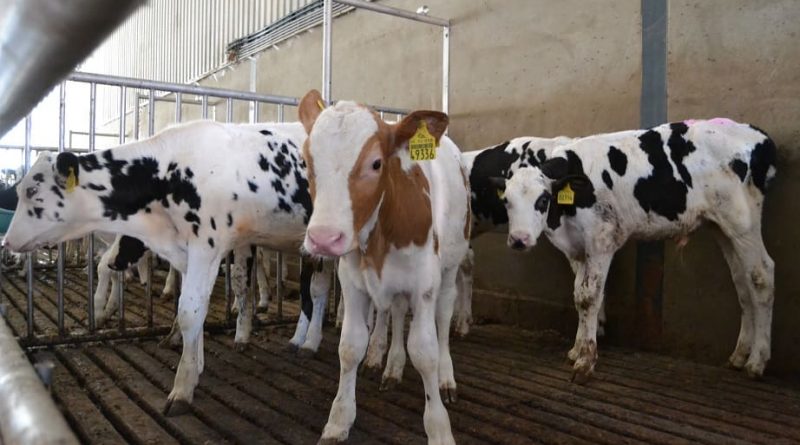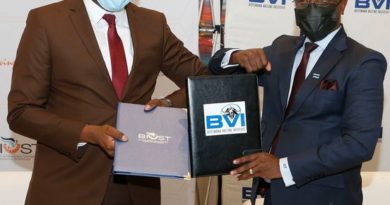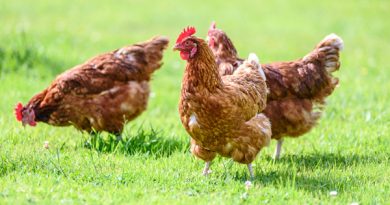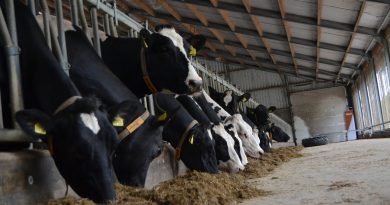Enjoying Success with Veal Farming
Have you ever wondered about what happens to males calves born in dairy farms. Dairy cows give birth at least once a year in order to continuously produce milk for a dairying enterprise. Offsprings of dairy cows are normally removed from cows within three days of being born. While most female offsprings end up serving as cows used to replenish the milking herd. Males calves are destined for an entirely different industry.
While the situation might be slightly different in Botswana, where I come from, and maybe the rest of Africa, there is a prosperous market for dairy calves in the western world, popularly known as Veal. The Netherlands is one of the countries which are leading in the Veal industry.
The country is home to over 2,000 veal farms and around 1.6 million calves are farmed and processed annually. And approximately 95 % of Dutch veal is exported, with Italy, Germany and France being key markets. More than 80 per cent of the total export is destined for markets in those three countries.
The main importer, Italy, takes roughly 40% of veal imports from Netherlands, followed by Germany and France each with a share of approximately 20% each respectively. The Netherlands is expected to begin exporting veal to China this year, after over 18 years of negotiations, thereby becoming the first European country to gain entry into the large and highly lucrative Chinese veal market. This follows on the footsteps of Japan, which lifted the ban in 2013, The US in 2016, as well as Taiwan which did in 2017.
Before Veal farming, Hans Luijerink of Ruhenberg BV was involved in bull farming, selling their bulls in Greece. it was a profitable venture especially with the subsidies. But when those were eventually stopped, the margins got smaller and smaller and in 2000 he decided to try veal farming. Eighteen years later, Ruhenberg BV has grown from the initial 200 calves to 3200 calves and currently employs about three people. One full time, and two on a part time basis. Hans’s wife does all the administration and office work at the farm.
“When it comes to running this farms, my wife is the flying Dutch man. There is no problem she can’t solve here” Emphasizes Hans.
The farm is located on a 40 ha piece of land they own in Overdinkel. The total land is about 70 ha on average as they also rent about 30ha as well. The land is used mostly to grow maize for the cattle. The calves are housed in barns from the time they arrive until they are ready for slaughter. Land is expensive in Netherlands. It costs roughly P890 000 ( €70 000 ) to buy a hectare in Netherlands. In fact, official EU figures by Eurostat puts the Netherlands as the most expensive country to buy farmland in.
Operations
The farm buys calves from a collection centre with a weight of around 50 kilograms at €210 per calf (about P2660) including tax. When the calves arrive at the Ruhenberg BV farm, they get milk for seven weeks then compound feed. After 10 weeks the calves get total mixed ration. The animals are fed until they reach 250kg slaughter weight which retails at around €3050. This process takes about 285 days for calves to reach the ideal weight at about 1.2 kg growth rate per day. On average the farm processes about 3200 calves at any given time.
It costs roughly €1 a day to raise a calf, which translates to €285, this is on feed only. Then there is the manure cost, which according to Hans, was around €60 per calf on average on his farm in 2017. Another cost which the veal farm has to contend with is veterinary costs. These averages €20 per calf, which according to Hans, is a bit steep when compared to their counterparts in the USA where it costs around €2.
“Mortality rate is at the Ruhenberg BV around 2%.” Says Hans.
He goes on to explain that the low mortality rate is a result of adhering to strict guidelines and regulations on the farm. Starting with transportation of calves from the collection centre.
” We ensure that they have ample space and are given the necessary care en-route to the farm. This includes availing drinking water and adequate drinking times along the way” He elaborates. The calves are also given proper bedding in the transportation trucks.
Hans Notes that adhering to these strict guiding principles not only benefits the calf, but it also results in less work for them. “A calf that has travelled well will not easily get sick hence less medical costs on our bill ” He says.
Every other seven weeks the farm sell calves to three different slaughters, with two located in the neighbourhood and another one located several tens of kilometres away. The veal is then sold to Spain, Denmark, Germany and a little bit remains in Holland.
“The idea behind selling to three different slaughter facilities is to spread the risk. If one slaughter has a problem then you can at least have some place where you can take you products to” Explains Hans.
There is no contract with the slaughters and this makes it a tricky business. They can buy 200 calves now and next time take about 100 or even need more. The farm slaughters about 4500 calves a year.
Nutrition and Wellbeing
” We work hand in hand with the authorities to improve the welfare of our calves. We do everything to improve their health and wellbeing.” Says Hans Luijerink. As noted earlier, the Ruhenberg BV farm follows strict production guidelines. For example, one of the guidelines dictates that farmers should reduce the use of antibiotics on their farms. Hans says they fully support this initiative, and their farm has already implemented a reduction of up to 30%.
Hans explains that they buy their calves from a collector in East Germany where they have large scale dairy farmers. When the calves arrive at the farm they are inspected for different issues such as health problems as well as feeding patterns. Then they are grouped into different groups as well as by age and then “kraaled” under animal-friendly conditions in barns with free walking areas.
“The reason we buy from one collector is to do with health. If you buy from Poland, France and even locally it becomes a challenge when there is an outbreak of disease on farm because you don’t know where it originates from right away.” He elaborates.
Calves that have issues are taken to a “hospital barn” where they are given extra care until they recover. After twelve weeks on the farm, the calves are transferred to different barns with even more space. The Society for Animal Protection dictates that each calf be given an area of about 1.8 square metres and the Ruhenberg BV farm has gone a step further by allocating each calf about two square metres.
Veal Classifications
There are two categories of Veal: White Veal and Rose Veal. For white veal, calves are slaughtered at around 8 months or less. Their meat is ashen in colour than that of rosé because they have been mostly fed milk based compound feed as well as being slaughtered younger.
Rose veal on the other hand, is from calves slaughtered when they are between eight and 12 months old. Calves reared for rosé veal are generally fed a more normal diet without restriction of iron intake. After 12 months the meat is now referred to as red meat.
” With us, we chose to sell slightly older calves from 8 to 12 months of age, referred to as old-rosé, because it’s tasty” Says Hans.
He further elaborates that rosé veal is delicious and tastes nicer, it’s soft and very tender. It has more flavour when compared to white rose. In addition, it is lean meat which fits well in the diet of most consumers who love veal.
According to Hans, while veal is generally considered a luxury product, to him white veal is the one which falls under that category. White veal costs up to €2 more than rose veal.
Animal Welfare
Animal welfare has always been a priority when it comes to livestock production in Netherlands. The Dutch were the first European country where the calf sector introduced group housing of its own accord. Since 2009 all veal sold in Dutch supermarkets is awarded a ‘star’ by the ‘Better Life’ quality mark of the Dutch Society for the Protection of Animals. The Better Life label is a label for animal welfare with 1, 2 or 3 stars that can be found on packs of meat, chicken, eggs and numerous composite products. The more stars, the better the life of the animals has been and the label is certified by independent certification bodies. The Ruhenberg BV farm is currently on 1 star.
Challenges
The intensive nature of Dutch dairy industry, a country the size of New York, means that farmers are now producing so much manure that they have literally ran out of room to safely and legally dispose of it. Recent reports notes that about 80% of farms in the Netherlands produce more dung than they can legally use on their farm.
To that effect, farmers pay millions of Euros a year to get excess manure removed from their properties. Currently it costs Hans about $20 per cubic metre to get rid of manure from his farm. To put this into perspective, a cow produces 5 cubic metres meaning it costs the business about $100 to get rid of the manure per cow. Ruhenberg BV sends about 89% of their manure to arable farmers.
“This is insane. People from all over the world are looking for manure while in Holland we have to pay to get rid of it from our farms” Says Hans. And he is right. In other parts of the world dairy farmers get paid by arable farmer for their organic by-product while in the Netherlands it’s the other way round. .
Hans is not the only one facing this manure problem. The oversupply of manure is a huge problem for livestock producers in Netherlands, especially in the pork, poultry and dairy subsectors. The Dutch farming industry is embroiled in a never ending war with conservationists. Finding a common ground between the farmers and environmentalists is a humungous challenge for the small European country, but it is an absolute necessity for the sustainability of both sectors.
Future Plans
Hans says plans are underway to set up a processing unit which will turn the cow manure into valuable, sellable organic fertilizers next year.
” The plan is to dry the manure up to 90% next year and then sell it to those who need it around the world ” He explains.
While the venture might not necessarily be profitable, Hans reckons it will be better than giving away over €200 000 annually. Which he currently does. The whole setup will cost about €1.2 Million to construct.
NB:
This article was published in the September 2018 edition of Farmers Review, Botswana’s monthly agricultural magazine. Aobakwe Gofamodimo was part of journalists who attended the International Federation of Agricultural Journalists ( IFAJ) Master Class and IFAJ 2018 Congress. The Ruhenberg BV farm was one of the farms he visited during the subsequent farm tours. The trip to the Dutch country was fully sponsored by IFAJ.



